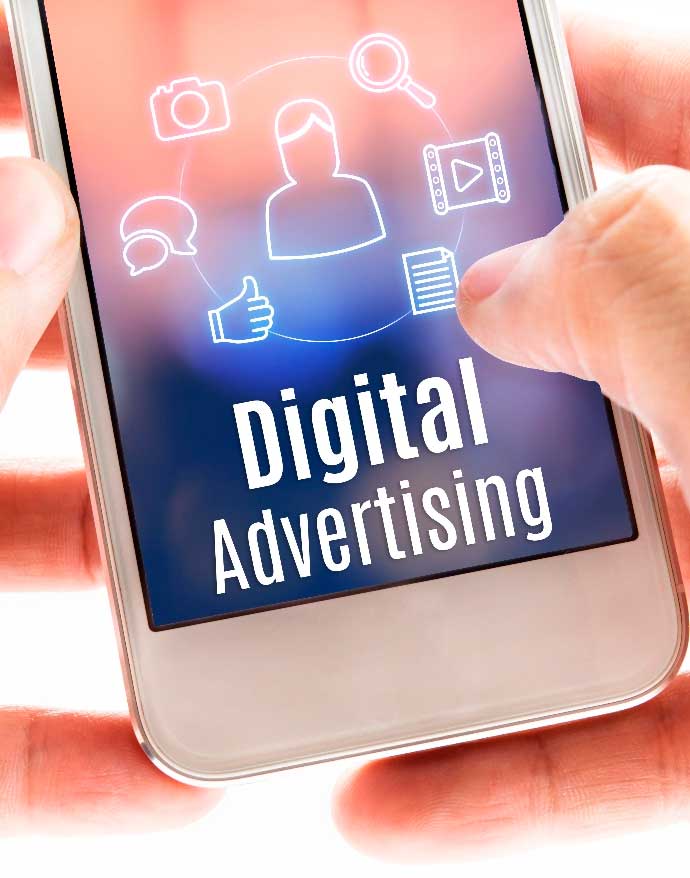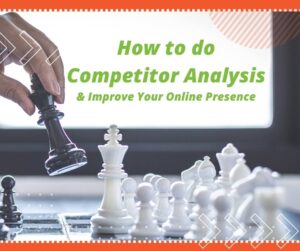What is Online Advertising?
Online Advertising is an ad promoted by a business through a variety of internet services. Online advertising takes on many forms such as online marketing, Pay-per-click, internet marketing, digital marketing, digital advertising and my personal favorite, the annoying creepy service that follows you around your devices and channels. That being said, targeted ads consistently prove they have value based off advanced tracking data.
It’s easy for a small business owner to be overwhelmed by this ever-changing marketing strategy, but it’s crucial for many businesses to make it part of their marketing mix. Online advertising leads to more customers, phone calls, website visits, brand awareness and can be a large part of the customer journey cycle. Let’s break down some of the most common and practical applications of online advertising specifically for small businesses who focus on their local market.
Paid Social
Advertising on social media is a trend that is continuing to grow every year. Check out this chart from Hootsuite about how much social media spending is expected to rise. Your most popular social media advertising options include Facebook, Instagram, LinkedIn, YouTube and Twitter. Facebook is going to be your most popular option because of how easy it is to track and setup. YouTube is another popular option because it’s the best platform for video advertising. We’ll discuss video ads a little bit later.
Small businesses often don’t advertise on social media for three reasons. They don’t think it’s necessary, don’t know how to implement it or don’t have the time to implement it. Let’s take some time to break down each one of these very valid concerns.
Is social media advertising necessary for my business?
When implemented correctly, social media advertising can help every business. Social media advertising can generate brand awareness for business or products that are just coming to market. Improving your website SEO rank is another important reason for social media advertising. Making direct sales is an obvious reason and can be directly track the effectiveness of your advertising.
How do I implement social media advertising?
This question is very reasonable and can be a difficult one to answer. This link can give you a few good options on how to teach yourself the inner workings of social media advertising through a multitude of channels. Advantages of teaching yourself how to advertise including keeping control of your advertising. The down side is not feeling confident and having the time in the day to implement the campaigns, which leads us to the last concern of many small business owners.
What if I don’t have enough time in the day to work on social media advertising?
Hire someone to do it for you. This can be an employee that you already have or hire one to do it for you. Typically, it would be someone handling your marketing and sales or at least someone who runs your social media accounts. Another option is to outsource it to a digital agency that has years of experience in the field. This digital agency should be a partner who has experience in tracking analytics to ensure your advertising is working. A great practice is to pair your employee in charge of social media content with a digital agency to implement your advertising. This creates personalized ads that will grab your customers\’ attention, along with the professional online marketing expertise to optimize your ad spending. First Call Web offers this service, so please feel free to reach out for a free quote.
Paid Search
Google Ads and Bing advertising have been around for decades, which means it has a history of success. Paid search is when you pay money for every click your ad gets from a user\’s search result. This PPC (pay per click) model allows businesses to measure the sales or value they receive from each click to the cost of said click.
Paid search is different from social media because businesses can cast a wider net for their audience and more searches come from Google than social media usage. The argument against paid search is you can’t track your audience as easy as you could on social media. Having said that, Google Ads has been around much longer than social media advertising platforms and allows you to optimize your campaigns more easily.
The preferred option for the majority of paid search advertising is Google Ads. Essential practices you need to consider with Google Ads are how to setup your Google Ads account, what keywords to target, how to adjust ad spending and what analytics you should be tracking. First Call web has years of experience with Google Ads due to its popularity. Check out our strategies on Google Ads for Small Business Owners.
Display Ads
Display ads are the ads you see on other websites and now many popular apps. They can typically be recognized as the banner ads you see on other business websites. Out of all the advertising options on this list, display ads are going to be the trickiest for small businesses in particular.
The benefits of display ads are being able to reach customers on websites you think they would visit. This allows you to target a specific audience, just like social media advertising. If you enjoy the PPC model, display ads typically follow it allowing you to easily determine if it’s worth the money.
The cons of display ads include people ignoring them, accidental clicks and ad blockers. Certain people won’t even notice display ads on websites because of how long the strategy has been in place and how good users are at not noticing them from the content. While PPC can be nice in many scenarios, display ads can accidentally clicked on and that costs the advertiser money. Lastly, ad blockers are becoming better every day and that can lead to your ads not even being shown. That is a sunk cost with how much time it took you to implement the ad in the first place.
Display ads do have its place in the world of advertising. Many larger companies benefit from the practice because of their large ad spending capabilities and ad tracking programs. Small businesses typically avoid this practice because they don’t have either big business advertising budgets or the expertise to track a user across multiple online channels. If your small business is in the ecommerce business, display ads could still be a good choice.
Video Ads
Video Ads are simply the videos users see before, during or after a different video they would like to watch. It looks just like a commercial, but can be either much shorter or longer than the average 45 second tv commercial. Video ads allows businesses to target their customers better than tv commercials because their advertising is more targeted and easier to track the results.
Video Ads can happen in many forms, but is typically done on YouTube. YouTube is obviously owned by Google and makes it easy to analyze search ads, display ads and video ads all at once. Google is investing a large amount of its time to improve video ads and is a large portion of their business.
One important reason to leverage video ads is because of how much it costs to produce a high-quality video. So let’s say your business wisely paid a video production company to produce a video for your website or for a tv commercial. Now you have this $3,000 to $10,000 (or more) advertising asset just sitting in your resources. Why not take advantage of this resource through video advertising?
Leveraging your video ads on social media is another trend growing in popularity. Users/customers are much more likely to engage in video ads than they are text or image ads. This trend is only growing and its important your small business start considering video advertising. It’s said that a picture is worth 1,000 words, but a video is worth 1.8 million words.








